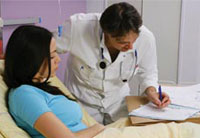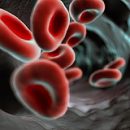Temporary disability is non-permanent, reversible character and ends with a complete recovery of the patient or a significant improvement in health status. Temporary disability can be partial or complete.
Content
Concept of ability to work
Ability - a set of physical and spiritual possibilities of a person (depending on the state of his health), allowing him to engage in labor activity. Medical disability criterion is the presence of the disease, its complications and forecast.
But not always the sick person must necessarily be disabled. For example, two people of different professions with the same disease: a stackingman and a teacher with Panarian. There is a disease. However, the stampel cannot work with Panaritis, and the teacher can lead lesson. Therefore, the doctor, on the basis of the degree of severity of functional disorders, the nature and course of the disease, the patient's work performed, the conditions of its labor solves its question about the social disability criterion and on the issuance of a patient of disability. Therefore, the social disability criterion determines in the presence of a disease of the labor forecast in a particular position and working conditions.
Medical and social criteria should always be clearly defined and reflected in the outpatient map of the patient.
Medical criterion is leading in establishing a fact of disability. However, it is not always that the disease is a sign of disability. There are cases when a healthy person can not work in his profession. For example, the chef's wife discovered hepatitis. The cook itself is healthy, however he cannot cook food, as he has contact for hepatitis.
Objectives of examination of disability
The main task of ability to work is to determine the possibility of this person to fulfill its professional duties, with compulsory accounting of medical and social criteria. In addition, in the tasks of medical examination of ability to work:
- Determination of treatment and regime that are necessary for restoring and improving human health
- Determination of the degree and duration of disability coming by the disease, accident or other reasons
- Recommendation of the most rational and complete use of labor with limited disability without prejudice to their health
- Detection of long-term or constant disability and the direction of such patients to the Medical Social Expert Commission
Varieties of temporary disability
If changes are able to be temporary, reversible and in the near future, recovery is expected or significant improvement, as well as disability, this type of disability is considered temporary.
By type, temporal ability to work can be:
- disease
- injury
- abortion
- Pregnancy and childbirth
- Adoption from the maternity hospital
- Spa treatment
- for the period of medical rehabilitation
- quarantine
- on prosthetics
- Family care
- When moving to light work
Temporary disability in character is divided into full or partial.
 Complete disability is when a person cannot do any work due to a disease and needs a special treatment.
Complete disability is when a person cannot do any work due to a disease and needs a special treatment.
Partial disability is disability in your profession while maintaining the ability to perform other work. If a person can work in lightweight conditions or perform a smaller work, it is considered partially lost disability.
With the examination of disability, the doctor sometimes has to meet with manifestations of aggravation and simulation.
Aggravation - exaggeration of sick symptoms of truly existing disease. With active aggregation, the patient takes measures to deteriorate its health or delaying the disease. With passive aggregation, it is limited by the exaggeration of individual symptoms, but does not accompany them to the actions that interfere with treatment. Pathological aggravation is characteristic of mental patients (hysteria, psychopathy and t. NS.), being one of the manifestations of these diseases.
Simulation - imitation by man symptoms of the disease that he has no.
The difficulties of the initial period of working capacity examination (the liberation of the patient from work) is significantly inferior to the difficulties of its final moment - extracting recovered to work.
The doctor has the right to issue a disability leafle to the full recovery of the patient or until the moment when obviously appear signs of disability. However, there are no such objective signs for which it would be possible to accurately establish when it was overpacing and fully restored to capacity. Here are always possible fluctuations in 1-2 days and the proper decision of the issue requires high qualifications of the doctor.
It is impossible in order «Reinsurance» provide the patient the extra days of liberation from work and at the same time unacceptable to write a patient to work before he recovered. No less difficulties arise when setting the time of the transition of temporary disability into constant disability.









